Sneakygreek
3 of a Kind
I had a cheap on off amazon, ruined the cardsAnyone ever add one of these to the mix? View attachment 623115
I had a cheap on off amazon, ruined the cardsAnyone ever add one of these to the mix? View attachment 623115
I think they only wash a brand new deckOk. What I've seen on TV (EPT for example) and large tournaments I have been to in real life, did washes. But I guess some casinos etc. do not. Interesting.
It's been a year since I've played live poker, but my recollection is that in the rooms I played in, they would switch decks every level (so, every 20 or 30 minutes) and when they switched decks, they'd wash.I think they only wash a brand new deck
Was curious to see how many timeyou guys shuffle the deck before a hand for your cash games/tournaments?
Came across youtube video that says the perfect amount was 7 bridge shuffles. Any pro dealers on the forum? lol
I'm actually very interested in this. (email removed)I wrote a paper in grad school that aimed to solve this problem using Monte Carlo simulations and rising sequences. If you're interested in it, I can send it to you. It's in PDF format. But here's a screen shot of the most relevant plots from the project. The blue line represents the distribution of rising sequences from a completely randomized deck, and the tan histograms are the distributions for the number of rising sequences found in decks that were shuffled n times.
View attachment 856423



 , or
, or 



 , or
, or 



 , etc.). If you start with an ordered deck and shuffle it n times, you can count the number of rising sequences that occur in the deck after shuffling to determine if it is sufficiently random. A deck of cards that has been shuffled a zillion times will have 26.5 rising sequences on average with a standard deviation of 2.1.
, etc.). If you start with an ordered deck and shuffle it n times, you can count the number of rising sequences that occur in the deck after shuffling to determine if it is sufficiently random. A deck of cards that has been shuffled a zillion times will have 26.5 rising sequences on average with a standard deviation of 2.1. 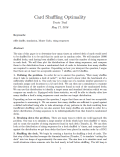
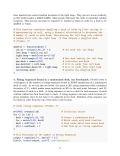
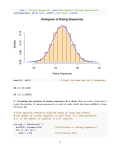
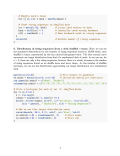
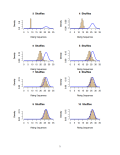
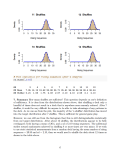
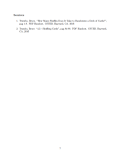
I thought you did something specific for the deckmate shuffler, but you're saying 7 is adequate, but at 10 shuffles it the highest randomization you can achieve? anything more is just wasted.
awesome.You'd need about 12 shuffles before the distribution of the ordering of the decks is indistinguishable from a distribution of truly randomized decks.
While only one deck, it would be like shuffle trucking.And since spades smashed the previous hand and this flop contains 2 of those cards, it is highly likely that another one will fall because only shuffling 3 times leaves the deck "chunked".
I dig this so much...I'll just post screen shots of the paper here. It's a fairly short read. It also has some R code in it for anyone wanting to duplicate the experiment and run it themselves.
Note: A "rising sequence" just means a run of ordered cards in the deck of any length. It can be sequential or can have cards in between, but it must be ordered from top to bottom (e.g.,, or
, or
, etc.). If you start with an ordered deck and shuffle it n times, you can count the number of rising sequences that occur in the deck after shuffling to determine if it is sufficiently random. A deck of cards that has been shuffled a zillion times will have 26.5 rising sequences on average with a standard deviation of 2.1.
Cliff notes: Yes, 7 riffle shuffles should be sufficient for preventing someone from being able to take advantage of the order of the cards in the deck. Anything less is exploitable. 3 shuffles is very exploitable. And while I don't address this in the paper, it's worth pointing out that box shuffles are effectively useless. Washing the cards is best.
Wash > riffle shuffle >>>>>>>>>>>>> box shuffle
View attachment 856448View attachment 856449View attachment 856450View attachment 856451View attachment 856452View attachment 856453View attachment 856454
... and the Oscar goes to....I dig this so much...
In fact, I dug it so much I spent most of my Sunday rewriting it in PHP (I'm not much for R) to try a few things out. I'll admit I was initially skeptical, but I'm happy to report I ended up confirming your results
I think I did some things a little differently (because not R, and because I was trying to work out what you were doing along the way).
- I'm looking for rising sequences (that is the next card higher than my card) and starting with my ordered deck that's the case for every card apart from the last one so my shuffling reduces the sequences, rather than increase them. I initially had a suited deck with 48 sequences in it, but decided the important thing was fore-knowledge of the total order, not the way the suits fell, so I switched to a single 52 card order.
- I don't use a binomial when splitting the deck, instead I assume a 10% +/- accuracy on the dealer's part in making two "equal" stacks. I then randomly picked from either half stack when riffling together.
- I modelled a strip because I wanted to compare with the riffle. It takes 1/6 (+/- 10%) of the cards from the top to make the bottom of the new stack, then takes the bottom 1/5 of what's left and puts them on top of the new stack, then top 1/4, bottom 1/3...
My results iterated over 10,000 instances of each shuffle type are below.
- My fully randomized model tends towards 25.5 sequences. I think this is an artefact of me counting down vs. you getting 26.5 counting up.
- 12 riffles is 25.7 - almost the same as fully random.
- 7 riffles is 28.9 - Within an SD or 2 of fully random.
- The strip isn't useless, but it's not great. 7 Strips will get you down to 38 sequences.
- 7 Strips is about the same as 4 riffles, 12 strips about the same as 5 riffles, or a 4 riffle, 3 strip combo
- The standard riffle, riffle, strip, riffle, cut has 40.3 sequences leaving the deck on the dirty side. I'm definitely not going to let folks do less than this from now on and will wash the deck periodically.
- I don't have any pretty pictures. Sorry.
Thanks for the inspiration!
View attachment 897667
I dig this so much...
In fact, I dug it so much I spent most of my Sunday rewriting it in PHP (I'm not much for R) to try a few things out. I'll admit I was initially skeptical, but I'm happy to report I ended up confirming your results
I think I did some things a little differently (because not R, and because I was trying to work out what you were doing along the way).
- I'm looking for rising sequences (that is the next card higher than my card) and starting with my ordered deck that's the case for every card apart from the last one so my shuffling reduces the sequences, rather than increase them. I initially had a suited deck with 48 sequences in it, but decided the important thing was fore-knowledge of the total order, not the way the suits fell, so I switched to a single 52 card order.
- I don't use a binomial when splitting the deck, instead I assume a 10% +/- accuracy on the dealer's part in making two "equal" stacks. I then randomly picked from either half stack when riffling together.
- I modelled a strip because I wanted to compare with the riffle. It takes 1/6 (+/- 10%) of the cards from the top to make the bottom of the new stack, then takes the bottom 1/5 of what's left and puts them on top of the new stack, then top 1/4, bottom 1/3...
My results iterated over 10,000 instances of each shuffle type are below.
- My fully randomized model tends towards 25.5 sequences. I think this is an artefact of me counting down vs. you getting 26.5 counting up.
- 12 riffles is 25.7 - almost the same as fully random.
- 7 riffles is 28.9 - Within an SD or 2 of fully random.
- The strip isn't useless, but it's not great. 7 Strips will get you down to 38 sequences.
- 7 Strips is about the same as 4 riffles, 12 strips about the same as 5 riffles, or a 4 riffle, 3 strip combo
- The standard riffle, riffle, strip, riffle, cut has 40.3 sequences leaving the deck on the dirty side. I'm definitely not going to let folks do less than this from now on and will wash the deck periodically.
- I don't have any pretty pictures. Sorry.
Thanks for the inspiration!
View attachment 897667
I'd say you're pretty solid there...7-10 for me, with a box or 2 in the middle. Never taking the cards off the table or exposing a card. I’m a pretty quick shuffler too
Yes it is. But casinos don’t care about randomized decks. They care about quick shuffles, leading to more hands, leading to more rake.isn't that the procedure for pretty much every casino?
Yeah. casino procedure is built for speed and game protection. It's tough to control cards while doing a proper shuffle sequence. Anything more than that is pretty over the top. Its funny how particular you guys are about your poker.Yes it is. But casinos don’t care about randomized decks. They care about quick shuffles, leading to more hands, leading to more rake.
That’s also known as boxing, and was mentioned previously as being not very effective.Are you factoring in “stripping” the deck while shuffling? Taking little groups of cards off while doing a traditional shuffle. Casino dealers always do this during their 4 shuffles
